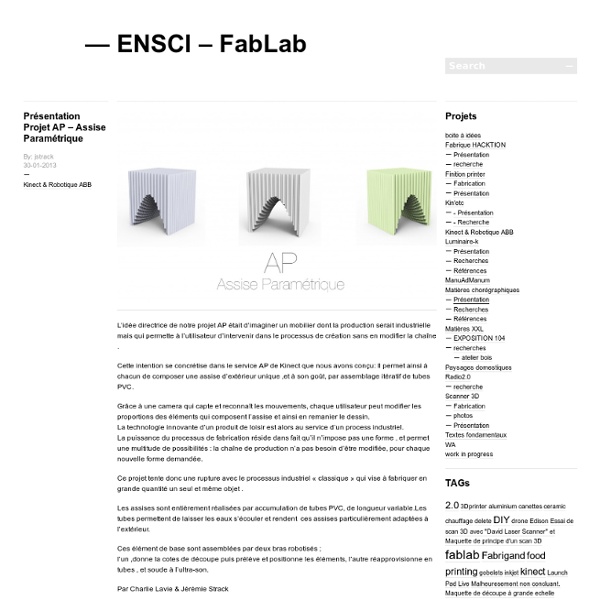Un site utilisant Réseau blogs de l'ENSCI

HackerspaceWiki
Quand Fleur Pellerin finance le [plus grand] FabLab [fantôme] de Paris
Arnaud Montebourg et Fleur Pellerin ont lancé un appel à projet FabLabs, fin juin 2013 intitulé « Aide au développement des ateliers de fabrication numérique « : une très bonne idée qui a visiblement donné des ailes à de nombreux « hackers-makers en herbe », puisque 154 dossier ont été renvoyés. Cet appel à projets a débuté le 25 juin et s’est terminé le 13 septembre 2013. 14 dossiers ont finalement été retenus et se verront verser des aides pouvant aller jusqu’à 200 000 € : ce montant devant couvrir au maximum 70% des besoins d’un FabLab. Jusque là, rien à dire. Mais, les voies de l’aide d’Etat sont impénétrables et visiblement très particulières pour Paris et sa proche banlieue. Si vous connaissez un tant soit peu le milieu des FabLabs, vous devez savoir qu’il existe depuis 3 ans un endroit excessivement dynamique, qui active un nombre impressionnant de projets, avec une équipe de passionnés qui se donne à fond. Pourquoi ? Ils sont une entreprise, et Benjamin est leur patron.
Electrolab Hackerspace / Fablab in nanterre
Numa, le grand lieu de l'innovation et du numérique à Paris
Service impression 3D en ligne, en magasin ou près de chez soi
Pour imprimer un objet, posséder une imprimante 3D n’est pas forcément une obligation. Il existe en effet plusieurs services d’impression 3D pouvant tout à fait remplir ce rôle. Si vous faites parti de ceux qui souhaiteraient d’abord tester cette nouvelle technologie ou bien qui hésitent encore parce que son fonctionnement leur semble trop compliqué, alors cette rubrique est faite pour vous. En effet, certaines personnes ne sont pas forcément prêtes à passer le cap de l’achat… Soit parce que l’imprimante 3D représente un coût encore trop élevé pour elles, soit parce que son utilisation leur semblerait trop anecdotique pour qu’elle soit rentable. N’ayez craintes, l’impression 3D a de nombreux visages et n’existe pas que sous une seule et même forme. L’impression 3D en ligne L’impression 3D en ligne fait parti des services désormais proposés par certains sites web. Sculpteo est le service d’impression 3D en ligne le plus connu en France. - Imprimer ses objets Imprimer près de chez soi
276_fr.pdf
FabLab Genk
Related:
Related:



